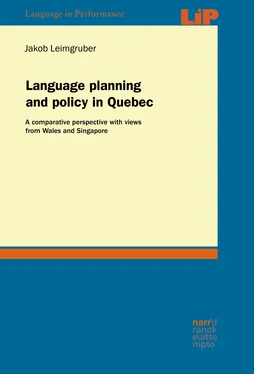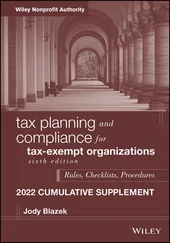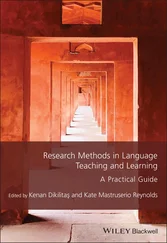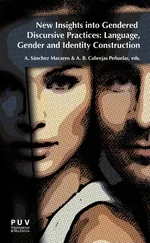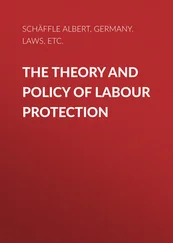Table 2.2: Knowledge of official languages, by mother tongue, for the province of Quebec (2011 census, in percent).
Table 3.1: Language policy types by Johnson (2013, 10).
Table 5.1: Questionnaire survey informant distribution across speech communities and data collection method.
Table 5.2: Number of languages self-reported, by age group.
Table 5.3: Language rankings, arranged by total number of users.
Table 5.3 (unlabelled): Table # continued: Language rankings, arranged by total number of users.
Table 5.4: Statements where age had a significant effect on agreement levels.
Table 5.6: A selection of STM station names that may appear English-influenced and their pronunciations on pre-recorded in-train announcements. The etymology is that from the Commission de toponymie’s online database ( http://www.toponymie.gouv.qc.ca).
Table 5.7: Languages in the weekly programme schedule on CINQ-FM ‘Radio Centre-Ville’, 2016–2017.
Table 5.8: Percentages of counter-greetings in either language given to a bilingual greeting.
Table 5.9: Counter-greeting language to variants of (hello).
Table 5.10: Language selection process: The pre-encounter language (if any) has an impact on the language of the greeting by staff, which in turn impacts the language of the counter-greeting by customers.
Table 5.11: Use of French and English by speech communities in three realms. Percentage of the respective speech community that uses the language in said realm.
Table 6.1: Household language statistics, percentages (2011 census)
Table 6.2: Welsh language ability, in percent, since the first census in 1891, with inter-census change in percentage points. Note that there was no census during the war in 1941, which explains the higher value of the differential.
Much has been written about language planning and language policies (LPP) in Quebec. Less work has been done, on the other hand, to situate this planning and these policies within larger issues governing LPP globally. The special situation of Quebec, a predominantly French-speaking province within a predominantly English-speaking country and continent, deserves attention in its own right: the Francophone population, numbering around 7.1 million in Canada, is largely concentrated in the province of Quebec (6.1 million),1 and has long been eager to protect its language from assimilation into English. The acute awareness of being surrounded by the English language, and being in a disadvantaged position both in terms of population size and the economic opportunities resulting from this minority status, has led to the formulation, in the 1960s and 1970s, of a series of legal proposals aimed at securing the survival of the language at least within the borders of the province, culminating in the 1977 Charter of the French language.
The relationship between language, nation, and state are critical to the understanding of the LPP existing in Quebec. The Québécois are recognised as a ‘nation within a united Canada’ by federal legislation, a wording that does little to address the ambiguous relationship between the nation and its ethnic and linguistic components (see section 2.3 for a discussion of ethnic and civic nationhood in Quebec). Contemporary policy would seem, however, to consider the French language as the prerequisite for membership in the Quebec nation. The provincial state, by extension, upholds the language rights of that nation and implements the legal framework necessary to safeguard its continued existence.
Quebec, rooted as it may be within its French linguistic tradition, remains an important part of the Canadian historical, cultural, and economic fabric. As such, particularly as regards its connectedness with the Canadian, continental, and global market economy, it is exposed to the same globalising forces of the ‘post-national’ (Heller, 2010; Heller, 2011; Heller et al., 2015; Wright, 2016) era as any other economically connected place on the planet. The way in which LPP takes into account the transnational flows of people, languages, and cultural capital is of paramount interest: its development from a policy bound by territorial concerns of the ethnolinguistic nation-state to one taking into account these globalised phenomena is something that this book will attempt to shed light on. The way in which similar challenges, among them the predominance of the English language as the global lingua franca, have been met in other polities, specifically in Wales and in Singapore, will inform our understanding of the situation in Quebec.
1.1 The relevance of Quebec for language planning and policy research
Research into the LPP of Quebec and its larger Canadian context has a long history. Beginning with the British conquest of 1760, questions arose as to the status of the French settlers and their language, being now challenged by those of the new English power. An overview of the historical background that these initial decades represent is given in section 2.1. While the Quebec Act 1774 settled the thorny issue of religion, it is the British North America Act 1867 that put the two languages, French and English, on an equal legal footing in the parliaments of both Canada and Quebec. Neither of these acts did much, however, to address the socio-economic stratification that would emerge, over time, in the province of Quebec, that put English speakers at the top of the economic ladder, concentrating power and financial and political capital among a comparatively small anglophone élite, while the masses of the working class were overwhelmingly francophone. It is in the decades of the 1960s and 1970s that resentment at this situation grew and that legislation was passed to address the issue. Among early assessments of the language policy developments in Quebec are Mallea (1977), Wardhaug (1983), Bourhis (1984), Levine (1989), Levine (1990), followed by, among many others, Locher (1988), Daoust (1990), Landry and Bourhis (1997), MacMillan (1998). The turn of the millennium did not diminish the interest of scholars in the LPP of Quebec, as testified by the works of MacMillan (2011), Martel and Pâquet (2012) and Kircher (2016), even Boberg (2010), more concerned with structural linguistic issues in Canada as a whole, devotes some time to the LPP of the province. The policies in place in Quebec have also informed research on LPP as a whole: case studies appear for instance in Beer and Jacob (1985), Spolsky (2004), and Grin and Vaillancourt (2015). Among Quebec’s policies that have had an impact in the field are those aimed at making French an attractive language among the workforce (informing economic approaches to LPP, see e.g. Grin 1996; Grin 2006; Gazzola and Wickström 2016), those concerned with regulating the linguistic landscape, i.e. the visual side of language in public space (Landry and Bourhis, 1997; Backhaus, 2009; Dagenais et al., 2009), language commodification and postnational approaches to LPP (Heller, 2010; Heller et al., 2015), and the interplay between language, nation, and citizenship (Oakes and Warren, 2007; Heller, 2011; May, 2012), to name but a few.
It should also be noted that the policy approaches in Quebec have had an impact not only on Canada itself, shaping in many ways the interaction between the federal government and the provinces and territories, but also on other polities seeking to implement their own language policy. It is certainly no accident, for instance, that the wording of parts of the language legislation in Wales parallels that of Quebec’s Charter of the French language, adapted to the local specificities of Welsh and English in the country (see section 6.2 for a discussion). Similarly, language legislators in Catalonia closely scrutinised the efforts undertaken in Quebec (Reniu i Tresserras, 2002), as did those in the Baltic states (Druviete, 2002; Rannut, 2002) and Puerto Rico (Muñiz-Argüelles 2002; see Dumas 2002 for an overview of the global impact of Quebec’s LPP).
Читать дальше
